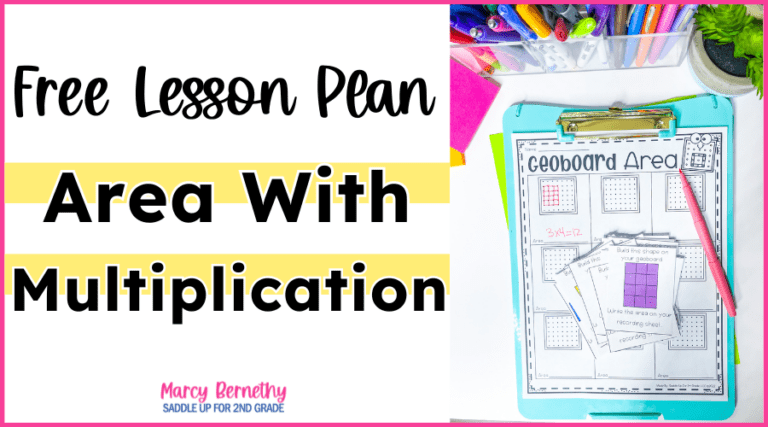

Join me for a FREE, Guided Math workshop to discover how to easily incorporate Guided Math into your current schedule!
Have you ever displayed a list of keywords in your classroom for your students to reference when they are solving math word problems? I am 100% guilty of this and used to think it was a great idea. During my first few years of teaching, I taught keywords in word problems explicitly. Then, I realized that teaching these words wasn’t exactly the best tool for my students when solving word problems in math class. I learned there were much better word problem strategies out there that would help them be more successful.

First off, let me just say that there is absolutely nothing wrong with teaching students keywords in word problems! Especially in primary grades when students are first being exposed to number problems, it can be a very useful strategy. However, with that being said, we need to use it as a tool, NOT a direct way to solve word problems. Teaching keywords in word problems can be a useful strategy, but there are other highly effective word problem strategies too.
When solely focusing on keywords in word problems, students tend to miss the big picture of what is going on in the problem. They read the last sentence of the question, find those specific keywords, look at the numbers presented, and then attempt to solve.
But what happens if there are no keywords at all? When this occurs, students that rely on this type of approach aren’t sure how to solve the problem.
Let’s take a look at some examples.
There are 3 boxes of chicken nuggets on the table. Each box contains 6 chicken nuggets. How many chicken nuggets are there in all?
The words “in all” are keywords associated with addition. More than likely, a lot of students will focus on those addition keywords and add 3+6 to find the sum. When this happens, they are missing the big picture, which would be that EACH box has 6 nuggets. So to solve they would need to add 6+6+6.
Julia left $5 on the table. Her brother left $7 on the table. How much money was left on the table?
If we are teaching “left” as one of the subtraction keywords that means that something often went away, more than likely, students will relate this problem with subtraction. A common misconception with this type of problem would be to identify the word problem keywords and subtract 7-5. They are missing what is actually occurring in the problem and will not be able to find the correct answer. Instead, they should be adding 5+7.
Bailee had 10 crayons. 4 were green and the rest were orange. How many orange crayons does Bailee have?
Do you notice any common keywords or clue words in this problem? Nope! This is why math keywords in word problems cannot be the only strategy we expose our students to. When we have students who only take this approach to problem solving, they get lost, their anxiety sets in, and they don’t know what to do.
Now, remember I said teaching this strategy is not forbidden, but we don’t want it to be the only way students learn. Think about the long-term learning process here. As students get into fourth grade and upper elementary, they could possibly struggle if not exposed to multiple learning strategies.
Research shows that by second grade, students are exposed to 11 different types of word problems. Using numberless word problems is one of my favorite ways to get students to think outside of the box and truly understand the context of the word problem! You can read more about how to begin using this here on the blog!
It’s our job as teachers to expose students to a variety of problem-solving strategies. This way students can choose which strategy they learn best with and can begin to take ownership of their learning. Keywords in word problems do not need to be the only way to teach our students!
I’m going to share with you 9 different word problem strategies that you can begin to implement with your elementary students today!
Looking for a set of word problem strategies anchor charts to help when teaching word problems? You can grab these Problem Solving Strategy Posters in my website shop or on TPT. These handy reference posters are a great way to get your students to understand how to use a variety of strategies for solving word problems beyond just keywords in word problems.
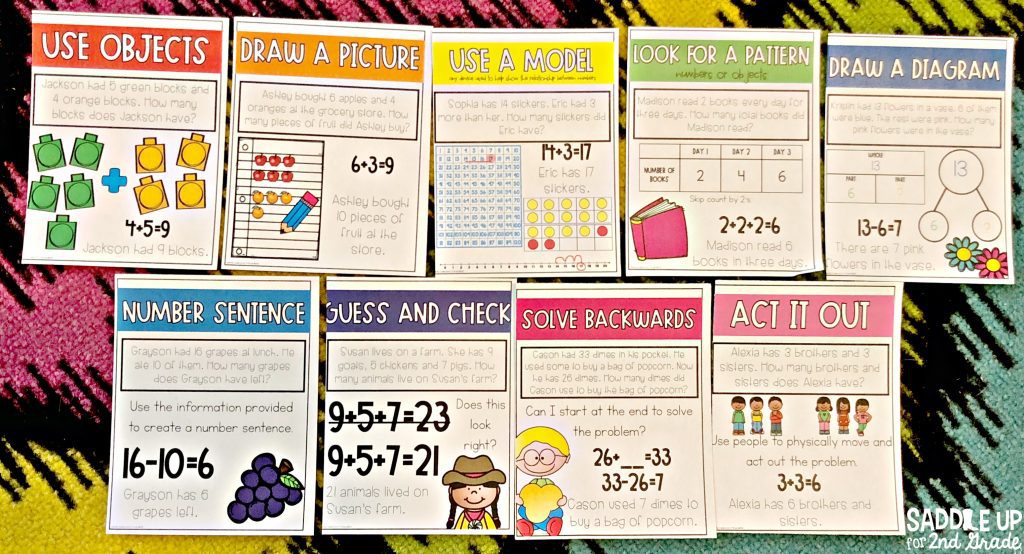
These word problem strategies posters also come in a black and white version you can print for students to add to their interactive math journal for reference all year long.
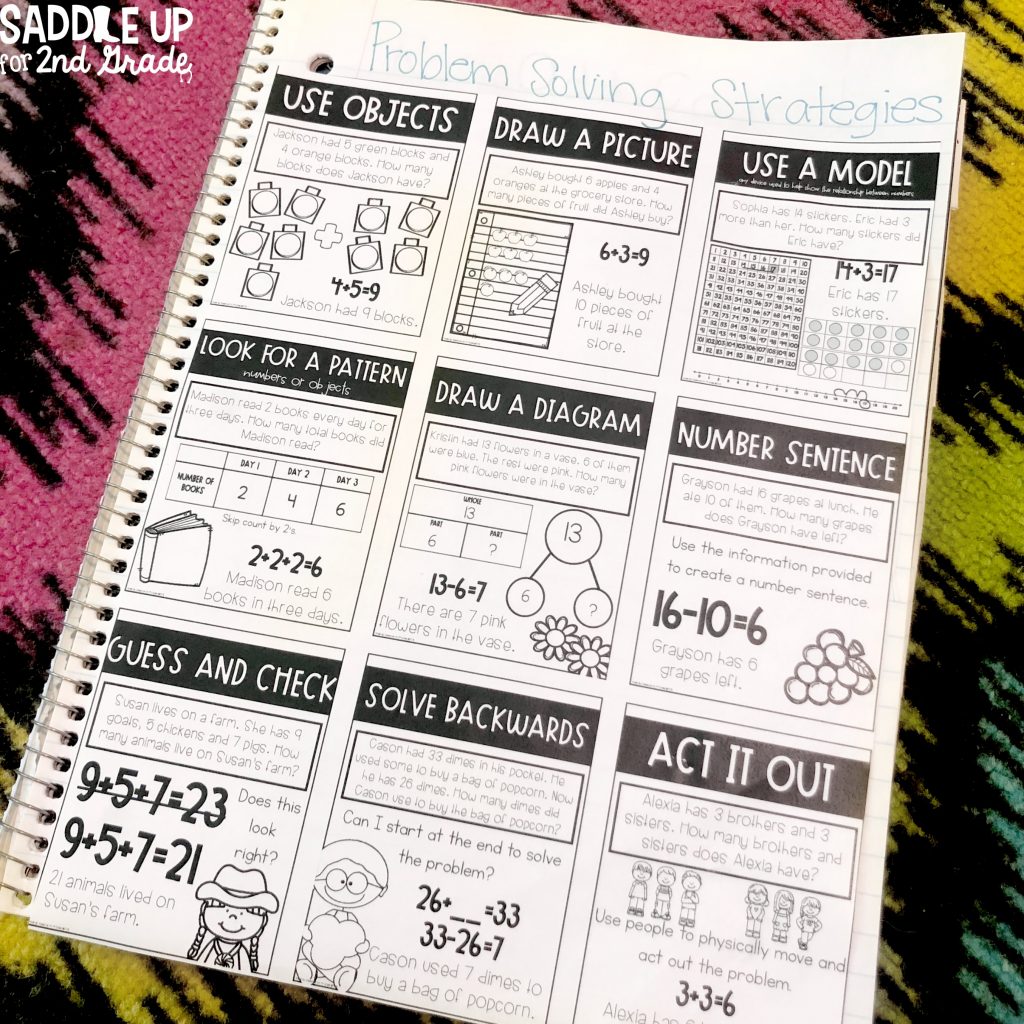
No matter what type of problem solving strategy you decide to start with, just remember the importance of those mathematical conversations with your students. Not only do they need to understand whether they are being asked to add or subtract, but by having those conversations, you are opening the door to higher level thinking, critical thinking, and developing excellent problem solvers!
If you are looking for resources for using these different problem solving strategies when teaching different types of problems, you can find them in my store!
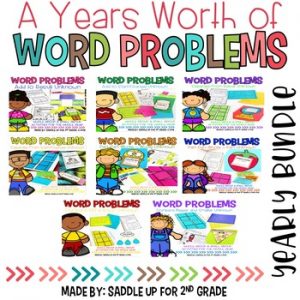
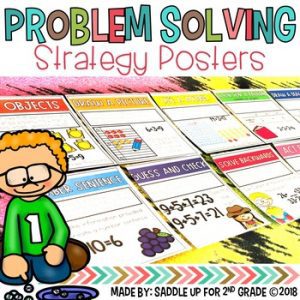
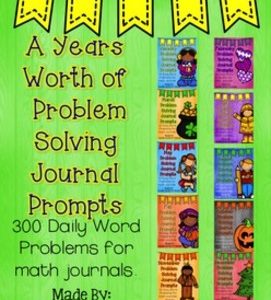
Looking for more tips and strategies for teaching word problem strategies?
Check out these blog posts:
Feel free to pin the image below to save this blog post for later!

Math should be fun, not stressful. Ditch the timed math fact tests and replace them with math games that will help your students learn and retain information more effectively.
© Saddle Up for 2nd Grade • Website by KristenDoyle.co